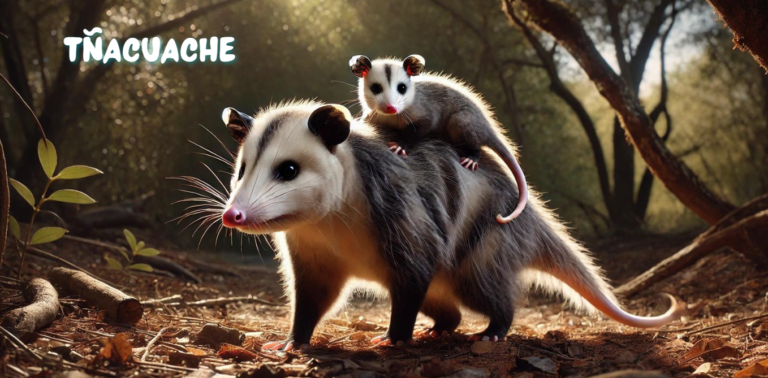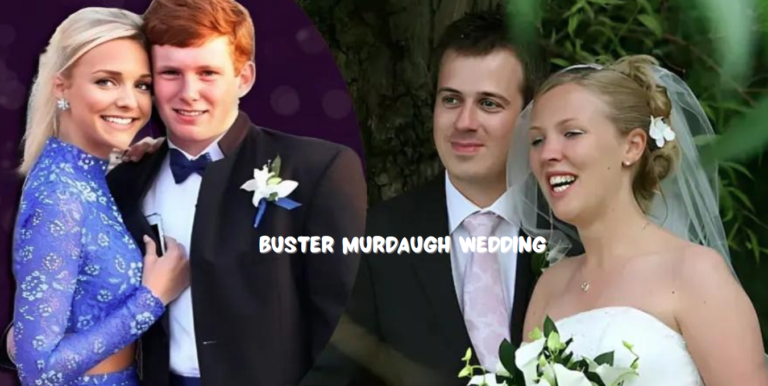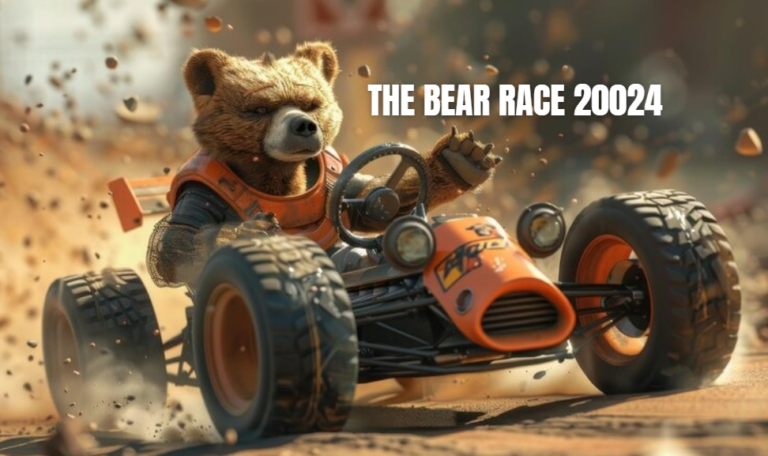Baby That Can Hoot HYT: Unraveling the Mystery Behind the Phrase and Its Cultural Significance
The phrase “Baby that can hoot” might appear quirky at first glance, but it has garnered attention due to its presence in popular culture, particularly in puzzles and crosswords. This article will delve into the origins, interpretations, and cultural impact of the term.
We will also explore the broader connotations of “hooting” in different contexts, the psychological appeal of such puzzles, and the significance of language play in popular media.
Introduction to the Phrase “Baby That Can Hoot”
The phrase “Baby that can hoot” has intrigued many due to its unusual and somewhat whimsical nature.
Although it first gained widespread attention as a crossword clue, its appeal has transcended the puzzle world, entering conversations about language, culture, and even psychology. This article aims to unpack the layers of meaning behind this phrase, exploring its roots and significance.
Crossword enthusiasts may recognize “Baby that can hoot” from a New York Times puzzle, where it was cleverly used as a clue. Beyond its immediate context, however, this phrase invites a deeper exploration of how language, particularly in the form of wordplay, captivates and engages us.
From the literal imagery of a baby making owl-like sounds to the metaphorical interpretations that may arise, “Baby that can hoot” is a prime example of how even the simplest phrases can carry complex connotations.
Origins of the Phrase
Historical Context
To understand the phrase “Baby that can hoot,” it is essential to look at the historical context of the words involved. The term “hoot” is commonly associated with the sounds made by owls, a feature that has fascinated humans for centuries. Owls have been regarded as symbols of wisdom, mystery, and even death in various cultures, which adds a layer of intrigue to the idea of a “baby” that can mimic this sound.
The combination of “baby” and “hoot” is not a common pairing in everyday language, which makes it stand out. The rarity of this phrase contributes to its appeal in a crossword puzzle, where the goal is often to challenge solvers with unique and unexpected word combinations.
The Role of Crosswords and Puzzles
Crosswords and other word puzzles often serve as a reflection of the cultural and linguistic trends of their time. The phrase “Baby that can hoot” exemplifies how crosswords can introduce or popularize unusual phrases, turning them into subjects of curiosity and discussion. The inclusion of such a phrase in a well-known puzzle like the New York Times crossword helps to cement its place in the collective consciousness of puzzle enthusiasts.
Moreover, the choice of words in a crossword clue can be seen as a microcosm of language evolution. The phrase “Baby that can hoot” might not have had much significance before appearing in a crossword, but its presence in the puzzle has given it a new life, prompting people to consider its possible meanings and implications.
Cultural Significance of “Hooting”
Hooting in Nature and Folklore
Hooting is most commonly associated with owls, whose nocturnal calls have been the subject of much folklore and myth. In many cultures, owls are seen as omens or messengers from the spirit world. The act of hooting, therefore, carries a certain mystique, which can be both enchanting and eerie.
In folklore, the sound of an owl hooting was often believed to signify an impending event, usually of a supernatural nature. This belief is prevalent in various cultures, from the Native American traditions where the owl’s hoot is seen as a harbinger of death, to the ancient Greeks who associated owls with the goddess Athena, symbolizing wisdom and protection.
The Symbolism of Hooting in Popular Culture
Beyond folklore, hooting has found its way into popular culture, often representing mystery or the presence of something otherworldly. In literature and film, the sound of an owl hooting often sets the scene for something significant to unfold, adding to the atmosphere of suspense or forewarning.
In the context of the phrase “Baby that can hoot,” the use of “hoot” taps into these cultural associations. The juxtaposition of a “baby” with the ability to “hoot” might suggest something unusual or extraordinary about this baby, which piques interest and invites speculation.
The Psychological Appeal of Wordplay in Puzzles
Why We Love Word Games
Wordplay, particularly in the form of puzzles, has a unique appeal that taps into our cognitive abilities and our love for problem-solving. The challenge of deciphering a clever or tricky phrase like “Baby that can hoot” engages our brains in a way that is both enjoyable and satisfying.
Psychologically, solving puzzles can stimulate the release of dopamine, the brain’s “reward” chemical, which makes us feel good about our accomplishments. This feeling of satisfaction is what drives many people to become avid puzzle enthusiasts, constantly seeking out new challenges to overcome.
The Role of Language in Cognitive Development
Puzzles that involve wordplay also play a significant role in cognitive development, particularly in terms of language acquisition and literacy skills. Engaging with phrases like “Baby that can hoot” requires solvers to think creatively about language, often stretching the boundaries of conventional meaning.
This kind of mental exercise is beneficial not just for young learners but for people of all ages, as it helps to maintain and enhance linguistic agility. The process of puzzling through wordplay can also lead to a greater appreciation for the nuances of language and the richness of its expressive potential.
Crossword Clues and Their Cultural Impact
The Art of Crafting Crossword Clues
Creating a good crossword clue is both an art and a science. It requires a deep understanding of language, an awareness of current events, and a knack for subtlety. A clue like “Baby that can hoot” is successful because it is unexpected, yet it fits within the established rules of crossword construction.
Such clues often become memorable because they challenge solvers to think outside the box. The best crossword clues are those that seem inscrutable at first glance but reveal a satisfying solution when the solver has that “Aha!” moment.
Famous Puzzles Featuring “Baby That Can Hoot”
The appearance of “Baby that can hoot” in the New York Times crossword has undoubtedly contributed to its fame. Crossword enthusiasts often share and discuss challenging clues, and this phrase has likely sparked many conversations about its meaning and implications.
As puzzles are shared and discussed online, phrases like “Baby that can hoot” can achieve a kind of viral status, spreading far beyond the original crossword audience. This phenomenon highlights the power of crosswords to influence language and culture in subtle but significant ways.
The Linguistic Analysis of “Baby That Can Hoot”
Phonetics and Semantics
From a linguistic perspective, the phrase “Baby that can hoot” is intriguing because it plays with sound and meaning in unexpected ways. The word “hoot” is an onomatopoeic term, meaning it imitates the sound it describes. This gives the phrase a playful quality, as it invites us to imagine a baby producing an owl-like hoot.
Semantically, the phrase challenges our expectations about what babies can do. Babies are typically associated with cooing or crying, not hooting. This departure from the norm is what makes the phrase stand out, both as a crossword clue and as a linguistic curiosity.
The Use of Onomatopoeia in Language Play
Onomatopoeia is a powerful tool in language play because it appeals to our sensory experiences. Words like “hoot” have a direct connection to the sounds we hear, making them vivid and memorable. In the context of “Baby that can hoot,” the onomatopoeic nature of “hoot” adds to the phrase’s charm and intrigue.
The use of onomatopoeia in wordplay also taps into our primal understanding of language. Long before we learn to speak, we recognize and respond to sounds, which are among the first building blocks of communication. This deep-seated connection to sound is what makes onomatopoeic phrases so effective in capturing our attention.
Interpretations of the Phrase
Literal vs. Figurative Interpretations
One of the most interesting aspects of the phrase “Baby that can hoot” is how it can be interpreted both literally and figuratively. Literally, it might refer to a baby capable of making a hooting sound, which is an amusing and somewhat surreal image. Figuratively, the phrase could be interpreted in various ways, depending on the context in which it is used.
For example, “hoot” is often used colloquially to mean something funny or amusing. In this sense, a “baby that can hoot” might be a metaphor for a particularly entertaining or lively child. Alternatively, it could be a playful way of describing a child with an unusually deep or resonant voice.
The Use of “Hoot” in Various Contexts
The word “hoot” has a range of meanings and connotations, which makes it ripe for interpretation. In addition to its literal sense, “hoot” can refer to laughter (as in “a hoot and a half”) or to something of little value (as in “not giving a hoot”). These varied meanings allow the phrase “Baby that can hoot” to be interpreted in multiple ways, each with its own nuance and flavor.
This flexibility in meaning is part of what makes the phrase so appealing as a crossword clue. It requires solvers to think about the word “hoot” in different contexts and to consider how those meanings might apply to the idea of a baby.
The Broader Meaning Behind “Baby That Can Hoot”
Possible Metaphorical Interpretations
Beyond its literal interpretation, “Baby that can hoot” could be seen as a metaphor for something unexpected or out of the ordinary. Babies, by their very nature, are full of surprises, and the idea of a baby hooting instead of crying or cooing is both amusing and thought-provoking.
In a broader sense, the phrase might symbolize the idea of defying expectations or breaking the mold. Just as a baby that can hoot would be an anomaly, the phrase itself invites us to consider the unexpected and to embrace the playful possibilities of language.
The Phrase in Different Linguistic and Cultural Contexts
The interpretation of “Baby that can hoot” may vary depending on cultural and linguistic contexts. In cultures where owls are seen as wise or mystical creatures, the phrase might take on a more symbolic meaning. In others, where owls are less significant, the phrase might be viewed simply as a humorous or quirky expression.
The cultural context also influences how the phrase is received and understood. In English-speaking countries, where wordplay and puns are highly valued, a phrase like “Baby that can hoot” is likely to be appreciated for its cleverness. In other linguistic traditions, the phrase might be interpreted differently, depending on the local associations with the words involved.
The Role of Media in Popularizing Quirky Phrases
How Media Influences Language Trends
The media plays a significant role in shaping language trends, particularly when it comes to popularizing quirky or unusual phrases. When a phrase like “Baby that can hoot” appears in a high-profile context like the New York Times crossword, it has the potential to reach a wide audience and to enter the vernacular.
Media outlets, including newspapers, television shows, and social media platforms, often serve as amplifiers for such phrases, spreading them far beyond their original context. This process can turn a once-obscure phrase into a widely recognized part of the language.
The Virality of Unique Crossword Clues
In the age of the internet, unique crossword clues can achieve viral status, particularly when they capture the public’s imagination. Phrases like “Baby that can hoot” can quickly spread across social media platforms, with users sharing their experiences of solving the puzzle and discussing the clue’s meaning.
This viral spread is a testament to the power of language to connect people and to spark conversation. In a world where much of our communication is mediated through screens, the shared experience of a challenging crossword clue can create a sense of community and shared understanding.
The Impact of Puzzles on Pop Culture
Iconic Moments in Puzzle History
Puzzles have had a significant impact on pop culture, with certain clues and phrases becoming iconic in their own right. The phrase “Baby that can hoot” may well be on its way to achieving such status, thanks to its clever wordplay and the attention it has garnered.
Over the years, certain crossword clues have become legendary, either for their difficulty, their humor, or their cultural relevance. These clues often serve as milestones in the history of puzzles, marking moments when the art of wordplay intersected with the broader cultural landscape.
The Role of Crosswords in Entertainment
Crosswords and other word puzzles occupy a unique place in the world of entertainment. They offer a form of mental exercise that is both challenging and enjoyable, appealing to a wide range of audiences. The inclusion of phrases like “Baby that can hoot” in puzzles adds an element of surprise and delight, keeping solvers engaged and entertained.
Puzzles also serve as a form of cultural commentary, reflecting the language, humor, and concerns of the time in which they are created. By engaging with puzzles, solvers participate in a broader cultural conversation, one that is shaped by the words and phrases that capture the public’s imagination.
Exploring Similar Phrases and Their Origins
Other Quirky Crossword Clues
The phrase “Baby that can hoot” is not the first, nor will it be the last, quirky crossword clue to capture the public’s attention. Crossword constructors are always on the lookout for unique and playful phrases that can challenge and entertain solvers.
Other examples of such clues might include puns, double meanings, or obscure references, all designed to make solvers think creatively about language. These clues often become talking points, as solvers share their experiences of puzzling through them and discuss their possible meanings.
The Evolution of Language in Puzzles
The language of puzzles is constantly evolving, influenced by changes in society, technology, and culture. New words and phrases enter the lexicon, while old ones fade away, and crossword constructors must stay attuned to these shifts in order to create relevant and engaging puzzles.
The phrase “Baby that can hoot” represents a moment in this ongoing evolution, capturing a particular cultural moment while also pointing to the enduring appeal of wordplay. As language continues to evolve, so too will the puzzles that challenge and entertain us.
Why the Phrase Captivates Audiences
The Appeal of the Unexpected
One of the main reasons why the phrase “Baby that can hoot” captivates audiences is because it is unexpected. The combination of “baby” and “hoot” is unusual and surprising, which makes it stand out in the context of a crossword puzzle.
This element of surprise is a key factor in the appeal of wordplay, as it challenges our assumptions and invites us to think in new and creative ways. The unexpected nature of the phrase also adds an element of humor, as we imagine the amusing scenario of a baby producing an owl-like hoot.
Psychological Insights into Puzzle Solvers
Puzzle solvers are often drawn to challenges that require them to think outside the box, and phrases like “Baby that can hoot” provide exactly that kind of challenge. The process of solving such a puzzle requires a combination of linguistic knowledge, creativity, and perseverance, all of which are highly rewarding for those who enjoy mental challenges.
Moreover, the sense of accomplishment that comes from solving a tricky puzzle is a powerful motivator, driving solvers to seek out more puzzles and to share their successes with others. The phrase “Baby that can hoot” taps into this psychological drive, offering solvers a satisfying and memorable challenge.
The Intersection of Language and Humor
How Humor Enhances Linguistic Play
Humor is an essential component of wordplay, and the phrase “Baby that can hoot” is a perfect example of how humor can enhance the enjoyment of language. The absurdity of the phrase—imagining a baby hooting like an owl—creates a humorous image that adds to the pleasure of solving the puzzle.
Humor also plays a role in making language more accessible and engaging. By incorporating playful and funny elements into puzzles, constructors can create a more enjoyable experience for solvers, encouraging them to explore the possibilities of language in new and creative ways.
The Role of Wit in Popular Crossword Puzzles
Wit is another crucial element in the success of crossword puzzles, and the best puzzles are often those that balance cleverness with challenge. A witty clue like “Baby that can hoot” demonstrates the constructor’s skill in crafting a phrase that is both challenging and amusing, providing solvers with a satisfying mental workout.
The use of wit in puzzles also reflects the broader cultural value placed on intelligence and cleverness. Solving a witty puzzle can feel like a validation of one’s own intellect, making the experience all the more rewarding.
The Future of Wordplay in Puzzles
Trends in Crossword Design
As language and culture continue to evolve, so too will the design of crosswords and other word puzzles. New trends in crossword design may include more emphasis on inclusivity and diversity, as well as the incorporation of digital and interactive elements.
Phrases like “Baby that can hoot” may become more common as constructors seek to create puzzles that are both challenging and culturally relevant. The future of wordplay in puzzles is likely to be shaped by these evolving trends, as well as by the continued creativity and innovation of puzzle constructors.
The Influence of Technology on Puzzle Creation
Technology is playing an increasingly important role in the creation and distribution of puzzles, with digital platforms making puzzles more accessible to a global audience. This has the potential to influence the types of phrases and clues that become popular, as puzzles reach new and diverse audiences.
In the future, we may see more puzzles that incorporate multimedia elements, such as audio or video clues, or that use artificial intelligence to generate or solve puzzles. These technological innovations will likely expand the possibilities for wordplay, creating new opportunities for phrases like “Baby that can hoot” to captivate and challenge solvers.
FAQs About Baby That Can Hoot HYT
1. What is the origin of the phrase “Baby that can hoot”?
The phrase “Baby that can hoot” gained popularity as a crossword clue, particularly in a New York Times puzzle. It combines the idea of a baby with the sound of a “hoot,” typically associated with owls, creating a playful and unexpected phrase.
2. What does “Baby that can hoot” mean?
Literally, it could refer to a baby capable of making a hooting sound, like an owl. Figuratively, it might be a metaphor for something amusing or surprising, playing on the various meanings of “hoot” in different contexts.
3. Why is “Baby that can hoot” popular in crosswords?
The phrase is popular because it is unusual and challenging, making it an effective crossword clue. It also taps into the cultural associations of “hooting” and the humor of imagining a baby with such an ability.
4. What makes the phrase “Baby that can hoot” intriguing?
The phrase is intriguing due to its unexpected combination of words and the multiple layers of meaning it can suggest. Its rarity and the challenge it presents in a puzzle add to its appeal.
5. How does “Baby that can hoot” reflect the use of wordplay in puzzles?
The phrase is a prime example of how wordplay can be used to create engaging and challenging puzzles. It plays with both sound and meaning, requiring solvers to think creatively and outside the box.
6. Can the phrase “Baby that can hoot” have different interpretations?
Yes, the phrase can be interpreted in various ways depending on context. It might be taken literally, as a humorous image, or figuratively, as a metaphor for something surprising or amusing.






